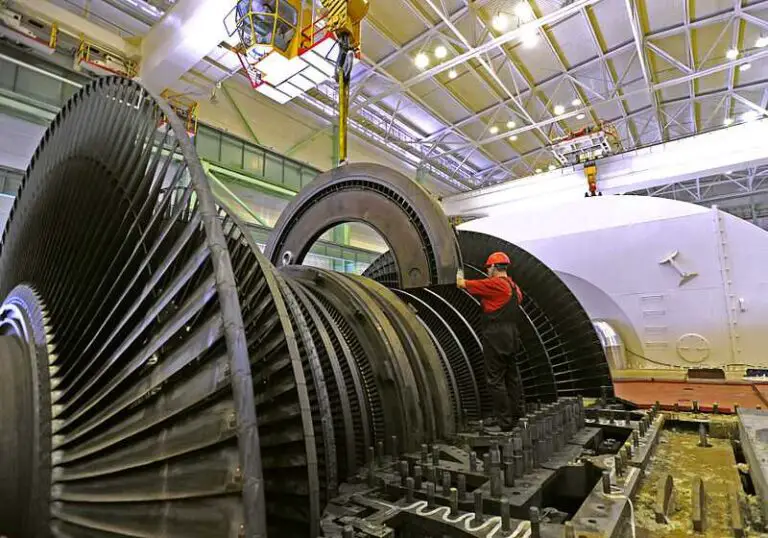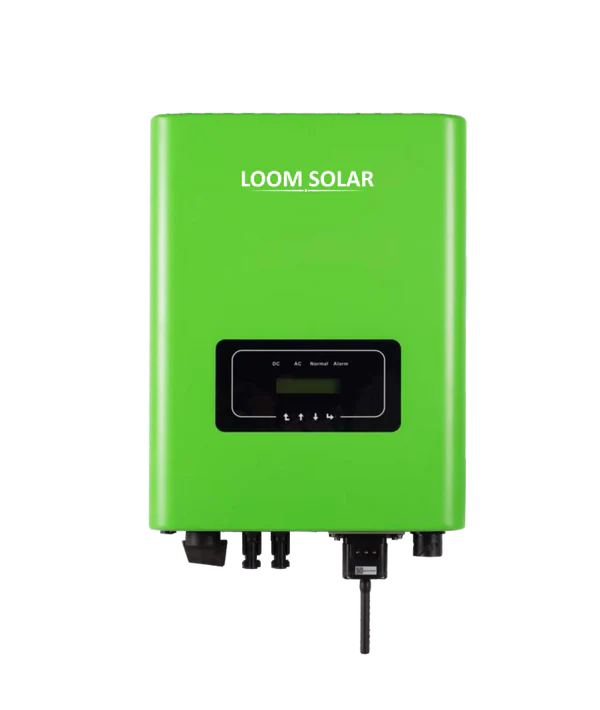9 Smart Grid Examples and Features Explained
Smart grid examples are; thermal efficiency monitoring and optimization systems, energy cost analysis systems, layout optimization systems, consumer metrics and feedback systems, real-time performance data management systems, residential utility data systems, smart energy communications and networking systems, grid automation systems, and wide-area situation awareness (WASA) systems.
This article discusses smart grid examples and features, as follows;
1). Thermal Efficiency-Monitoring and Optimization Systems (as one of the Smart Grid Examples)
Thermal efficiency monitoring and optimization systems are smart grid systems that are specially equipped and designed for energy conservation.
In order for energy to be conserved in electricity distribution networks, a high degree of energy efficiency must be achieved. The goal of thermal efficiency smart grid systems is to achieve energy efficiency and conservation by establishing synergy and balance between demand and supply [7].
To achieve this, it employs a two-way networks that is driven by continuous data collection and analysis. Based on the data that is repeatedly collected (on an interval basis), causes of energy loss are identified, and decisions are made to minimize these losses and optimize the efficiency of these systems.
Thermal efficiency smart grid systems can be integrated with renewable energy facilities and cogeneration units, to improve the performance of such systems [6].
They are also used with heating and cooling systems to minimize energy losses in the form of heat.
When the effect of thermal efficiency smart grid systems on the environment is considered, it can be argued that these systems help reduce environmental degradation by minimizing energy losses from fossil fuel-fired power plants, and mitigating greenhouse emissions.
2). Energy Cost Analysis System
Major challenges affecting smart grid systems include effective management and cost analysis [2].
The energy-cost analysis system is one of many specialized examples of smart grid facilities whose role is mainly to analyze the cost-benefit factor for electricity.
By their operations, these smart grid systems can help establish economic sustainability in the process electricity generation, distribution and consumption.
Functions of energy-cost analysis systems include metering, cost forecast, and consumption estimation. They help clarify the financial implications of power use, and are helpful to establish flexibility and integration capability.
3). Layout Optimization Systems (as one of the Smart Grid Examples)
Layout optimization systems are smart grid systems which are specially developed and designed to test and establish the best spatial models for complex electric systems [1].
An example of a complex system requiring this functionality is wind farm. Because wind farm comprises of multiple important components, it is important to ensure that the complexity of these power plants does not interfere with performance.
With layout optimization, wind turbines in a wind farm can be maximized in terms of their combined power output.
Other complex power systems can also benefit from layout optimization smart grids.
Basically, this type of smart grid system works based on architectural algorithms that control communication and configuration. Continuous data collection, analysis, monitoring and testing, all help to identify and implement the best architectural layout of elements for the highest efficiency and performance.

4). Consumer Metrics and Feedback Systems
Consumer metrics and feedback systems are one of the most important examples of smart grid technologies.
Also known as ‘consumer collaborative’ or ‘customer feedback’, these systems operate on the basis of a bi-directional communication loop that channels data flow between the operator, smart grid, and user [9].
The goal of consumer metrics and feedback is to establish and artificial, electricity ecosystem, where the energy pyramid is controlled and determined by the consumers.
Energy use patterns or trends are identified through continuous data collection and analysis, and used to develop an optimal pattern of energy supply that is aimed at conserving energy and improving efficiency.
Using this system, operators can identify areas in need of improvement in the power supply chain. Consumers can also improve their energy consumption through conservation practices, thereby reducing the cost of electricity and the amount consumed.
A fair amount of public education is needed for consumer metric systems to operate. Consumers need to be aware of the role of electricity generation in environmental degradation through pollution, climate change and global warming.
They should also understand the basics of how smart grids work and the economic, environmental and social implications of their power consumption habits.
5). Real-time Performance Data Management Systems (as one of the Smart Grid Examples)
Real-time management of performance data is carried out by smart grid systems that are equipped data processing architectural algorithms [4].
The real-time performance analysis tool is generally a hybrid software systems for multi-criteria selection and assessment.
Its role is to track and reduce inefficiencies due to energy wastage or losses. Data distribution is then carried out in such a manner as to address these inefficiencies.
Real-time performance data management systems also function based on two-way, bi-directional communication and data transfer between three main points; the operator, system, and user.
It uses artificial intelligence technology to analyze energy consumption data and identify trends, which include faults and downtimes, that need to be eliminated to improve performance.
6). Residential Utility Data Systems
Residential utility system is a specialized smart grid system whose role is to synchronize the operations of domestic electrical appliances in a residential setting.
Although the term ‘residential’ is used, this type of smart grid system can be used in offices and industrial settings, as long as there are multiple appliances being used.
There are strong ties between residential utility data systems and smart house technologies [8].
One of the requirements for a smart building is an efficient means of synchronizing energy appliances with the goal of managing and monitoring energy consumption.
Residential smart grid systems can be integrated with other power facilities like energy management systems, heating and cooling units, smart meters, and deep cycle batteries.
In addition to unifying or centralizing the energy use for multiple appliances, the smart grid facilitates bi-directional communication between the building and utility grid, by analyzing energy consumption patterns and indicating the cost, safety and environmental effect of such patterns.
Available data is then used to make decisions on performance optimization.
7). Smart Energy Communications and Networking Systems (as one of the Smart Grid Examples)
Smart energy communications and networking systems are electrical systems equipped and specialized for rapid and efficient handling of data.
This example of smart grid is designed by the integration of control and monitoring technologies [5], and usually include IP-enabled smart meter networking.
The aim of smart energy communications and networking systems is to expand the geographic coverage of digital electric networks while increasing the effectiveness of data transfer.
Modern smart grid systems generally try to improve their communication and networking capabilities.
For such systems, a central location or facility usually exists for compilation and analysis of data from multiple smart meters.

8). Grid Automation Algorithms
Grid automation algorithms are software systems that are designed to improve the operational efficiency of electricity facilities.
They are mentioned here as one of the examples of smart grid systems on the basis of functionality; as there are some smart grids whose sole purpose is to perform automated operations in energy management.
The two main technological components of such systems are Internet of Things (IoT) and artificial intelligence.
Grid automation algorithms improve efficiency by solving challenges of integration, data analysis and energy-supply control.
9). Wide-Area Situation Awareness (WASA) Systems (as one of the Smart Grid Examples)
Wide-Area Situation Awareness (WASA) system is an example of a smart grid system that is specialized for broad-range geographic monitoring.
This system is equipped with data collection components and wireless sensor networks for collection, analysis and utilization of information from smart meters across a wide area.
The advantage of this system lies in its ability to improve automation and intelligence of smart grid technology [3]. It is also highly versatile, and can be integrated with various renewable and non-renewable energy facilities.
Conclusion
Smart grid examples are;
1. Thermal Efficiency-Monitoring and Optimization Systems
2. Energy Cost Analysis Systems
3. Layout Optimization Systems
4. Consumer Metrics and Feedback Systems
5. Real-time Performance Data Management Systems
6. Residential Utility Data Systems
7. Smart Energy Communications and Networking Systems
8. Grid Automation Algorithms
9. Wide-Area Situation Awareness (WASA) Systems
References
1). Ahat, M.; Amor, S. B.; Bui, M.; Guérard, G.; Petermann, C. (2013). “Smart Grid and Optimization.” American Journal of Operations Research 3(1):PP. 196-206. Available at: https://doi.org/10.4236/ajor.2013.31A019. (Accessed 7 September 2022).
2). Iqbal, M. M.; Ahmed, W.; Shaikh, M. M.; Zafar, S. M.; Bhellar, S. H. (2019). “Cost Analysis and Implementation of Smart Grid in Pakistan.” Available at: https://www.researchgate.net/publication/344537065_Cost_Analysis_and_Implementation_of_Smart_Grid_in_Pakistan. (Accessed 7 September 2022).
3). Lei, W.; Wen, H.; Wu, J.; Hou, W. (2021). “MADDPG-Based Security Situational Awareness for Smart Grid with Intelligent Edge.” Applied Sciences 11(7):3101. Available at: https://doi.org/10.3390/app11073101. (Accessed 7 September 2022).
4). Nambi, S. N.; Vasirani, M.; Prasad, V.; Aberer, K. (2015). “Performance analysis of data processing architectures for the Smart Grid.” Available at: https://doi.org/10.1109/ISGTEurope.2014.7028855. (Accessed 7 September 2022).
5). Raza, N.; Oasim, M.; Soofi, A. A.; Akbar, S. (2019). “Study of Smart Grid Communication Network Architectures and Technologies.” Journal of Computer and Communications 07(03):19-29. Available at: https://doi.org/10.4236/jcc.2019.73003. (Accessed 7 September 2022).
6). Schellong, W.; Schmidla, T.; Stadler, I.; Strumpler, F. (2012). “Integration of cogeneration systems into smart grids.” Power Electronics, Electrical Drives, Automation and Motion (SPEEDAM). Available at: https://doi.org/10.1109/SPEEDAM.2012.6264579. (Accessed 7 September 2022).
7). Stănişteanu, C. (2017). “Smart Thermal Grids – A Review.” The Scientific Bulletin of Electrical Engineering Faculty. Available at: https://doi.org/10.1515/sbeef-2016-0030. (Accessed 7 September 2022).
8). Straigier, J.; Hauttekeete, L.; Marez, L. (2010). “Introducing smart grids in residential contexts: Consumers’ Perception of Smart Household Appliances.” Innovative Technologies for an Efficient and Reliable Electricity Supply (CITRES). Available at: https://doi.org/10.1109/CITRES.2010.5619864. (Accessed 7 September 2022).
9). Tabrizi, A.; Kariminezhad, K. (2021). “Review Study of Smart Grid Customers and its Self-Healing System.” The 6th National Conference on Applied Research in Electrical Mechanical and Mechatronics Engineering. Available at: https://www.researchgate.net/publication/349297289_Review_Study_of_Smart_Grid_Customers_and_its_Self-Healing_System. (Accessed 7 September 2022).

